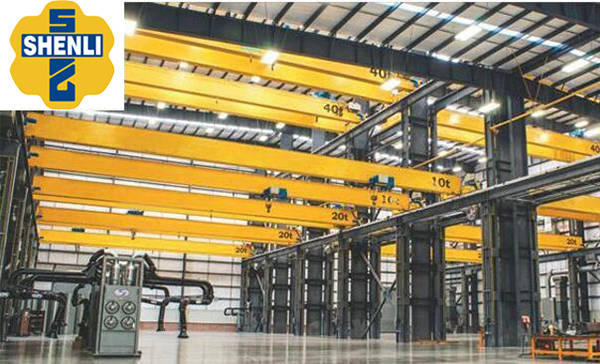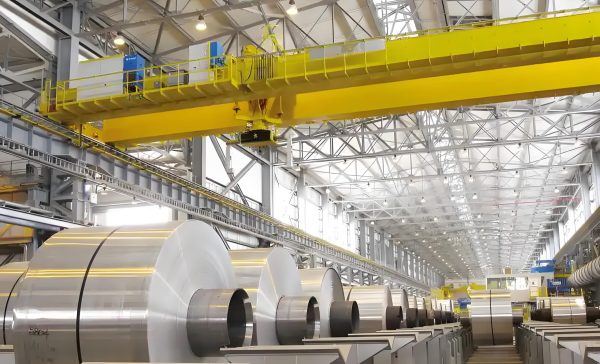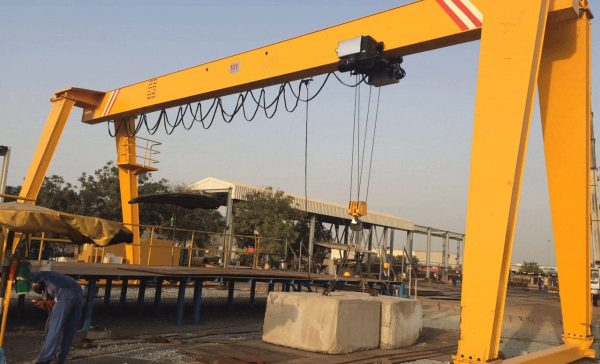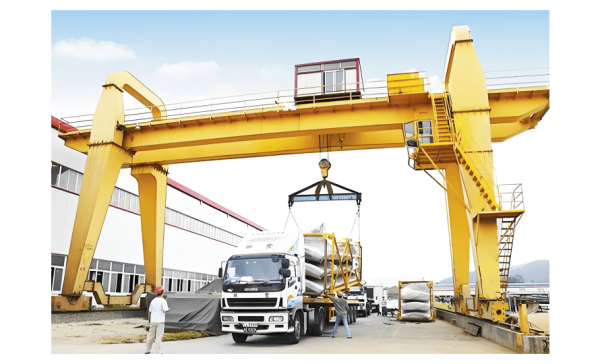Comprehensive Guide to European Cranes – Single and Double Girder Structures, Parameters, Prices, and Manufacturer Information
What is a European Crane?
A European crane is an advanced lifting device primarily utilizing a modular design, characterized by lightweight construction and stable operation. Compared to traditional domestic cranes, European cranes feature a more compact structure, effectively enhancing work efficiency. These cranes are commonly used in various industrial environments, such as manufacturing, warehousing logistics, and heavy equipment manufacturing, offering high cost-effectiveness and operational flexibility.
Advantages of European Cranes
Energy Saving and Emission Reduction: The design of the motors and drive systems in European cranes has been optimized to significantly reduce energy consumption, aiding businesses in achieving energy-saving and emission-reduction targets.
Increased Work Efficiency: These cranes boast high running speeds and stable lifting performance, and are equipped with automated control systems that enhance overall workplace efficiency.
Low Maintenance Costs: Thanks to the simplified structure, the frequency and cost of maintenance for European cranes have markedly decreased, lowering the long-term operating costs for businesses.
Type Of European Crane
European Single Overhead Crane
The European Single Overhead Crane is a cutting-edge lifting solution designed for maximum efficiency and performance in various industrial applications. Utilizing a lightweight and compact design, this type of crane features a single girder structure that ensures optimal load distribution and superior lifting capabilities. With advanced technology such as automated control systems and high-quality electric hoists, European Single Overhead Cranes deliver precise and stable operations, making them ideal for tasks in manufacturing plants, warehouses, and assembly lines.
European Double Overhead Crane
The European Double Overhead Crane is a sophisticated lifting system engineered for heavy-duty applications in various industrial sectors. Featuring a robust double girder design, this crane offers enhanced load capacity and stability, making it the ideal choice for tasks requiring the movement of substantial weights. With precision-engineered components and advanced technology, European Double Overhead Cranes ensure superior performance, safety, and efficiency in environments such as manufacturing plants, shipyards, and construction sites.
European Single Gantry Crane
The European Single Gantry Crane is an innovative lifting solution designed for efficient material handling in various industrial settings. Characterized by its single-beam structure supported by vertical legs, this gantry crane offers exceptional mobility and versatility, making it suitable for tasks in warehouses, construction sites, and fabrication shops. With a focus on maximizing workspace utilization, the European Single Gantry Crane can easily be moved along a track or positioned precisely where needed, streamlining the loading and unloading processes.
European Double Gantry Crane
The European Double Gantry Crane is a robust and versatile lifting solution designed to handle heavy loads with precision and stability in various industrial environments. Unlike single gantry systems, this crane features a distinct double-beam structure that provides enhanced lifting capacity and support, making it ideal for demanding applications in manufacturing, shipping, and construction. With its ability to span large distances, the European Double Gantry Crane facilitates efficient material movement, allowing for seamless operations in workshops and on job sites.
Introduction to Single Girder European Cranes
Introduction to Single Girder European Cranes
Single girder European cranes consist mainly of a main beam, end beams, electric hoists, and control systems. The design of the main beam enhances its load-bearing capacity and stability, while the electric hoist provides superior lifting efficiency.
Applicable Scenarios
- Small factory workshops
- Assembly lines
- Warehouses
Technical Parameters Table
| Load Capacity | Span | Lifting Height | Working Class |
|---|---|---|---|
| 1-20 T | 7.5-28.5 m | 6-12 m | M5 |
Introduction to Double Girder European Cranes
Structure and Principle
Double girder European cranes adopt a design with two main beams, equipped with trolleys, hoists, and drive systems, providing higher load capacity and stability.
Applicable Scenarios
- Large factories
- Heavy equipment manufacturing
- Steel structure workshops
Technical Parameters Table
| Load Capacity | Span | Lifting Height | Working Class |
|---|---|---|---|
| 5-100 T | 10.5-35 m | 6-30 m | M5-M7 |
Comparison: European Cranes vs. Domestic Cranes
- Structural Comparison: European cranes have a more compact structure and lower lift heights, allowing for better space utilization.
- Performance Comparison: In terms of stability and intelligent control, European cranes outperform domestic cranes.
- Price Comparison: Although European cranes are slightly more expensive, their overall lifecycle cost is lower.
- Service Life Comparison: European cranes generally have a design life of over 20 years.
Model and Parameter Specifications for European Cranes
Single Girder Crane Parameters Table
| Technical Parameters | Description |
|---|---|
| Load Capacity | 1-20 T |
| Span | 7.5-28.5 m |
| Lifting Height | 6-12 m |
| Working Class | M5 |
Double Girder Crane Parameters Table
| Technical Parameters | Description |
|---|---|
| Load Capacity | 5-100 T |
| Span | 10.5-35 m |
| Lifting Height | 6-30 m |
| Working Class | M5-M7 |
Application Scenarios for European Cranes
- Factory workshops
- Warehouse logistics
- Assembly workshops
- Steel structure manufacturing plants
- Other customized requirements
Factors Influencing the Price of European Cranes
- Load capacity and span
- Configuration (motor, electric hoist, control system brands)
- Manufacturer qualifications and manufacturing processes
- Custom requirements and installation location
How to Choose a European Crane Manufacturer?
- Qualifications and Certifications: Check for ISO, CE, and other certifications.
- Industry Experience and Case Studies: Choose manufacturers with rich experience.
- After-Sales and Installation Team Capability: Ensure prompt and effective after-sales service.
- Customer Reviews and Partner Reputation: Refer to customer feedback and evaluations.
Our European Crane Project Cases
Domestic Case
- Customer Background: A manufacturing client using a single girder crane.
- Model Used: 10T single girder crane.
- Site Photos:
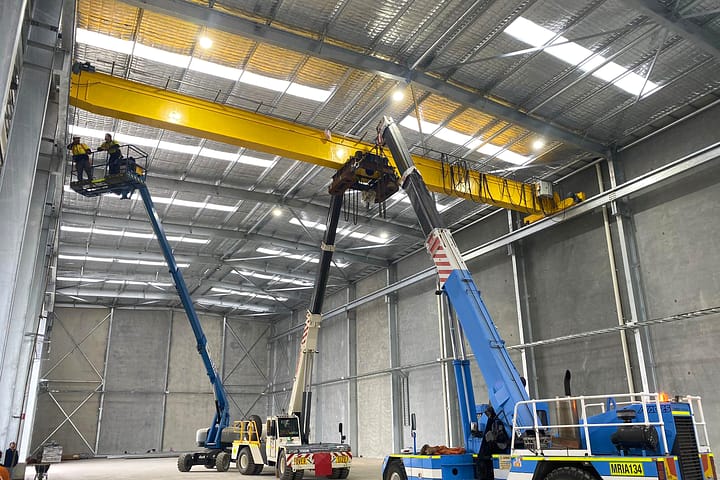
Overseas Export Case
- Project: Export of a double girder crane to Indonesia.
- Model Used: 50T double girder crane.
- Site Photos: https://www.facebook.com/share/v/1Fn3UtduDz/
European Crane Selection Guide
- How to Choose a Model Based on Load Capacity: Match different tonnage requirements to avoid overload or excess configuration.
- How to Select Span and Height Based on Workshop Structure: Site measurement considerations and beam end and track layout suggestions.
Common Selection Errors
- Ignoring lift height limitations
- Not considering future capacity expansion needs
Frequently Asked Questions (FAQ) About European Cranes
- How much does the price of European cranes differ from ordinary cranes?
- What is the delivery time?
- Do you provide on-site installation?
- How should European cranes be maintained?
Contact Us Now
Have questions about our cranes or need help?
Reach out to our friendly team for expert support and guidance.
We are here to help you power your journey towards a greener future !
Address: Crane Industry Park, Xinxiang City Henan Provice

